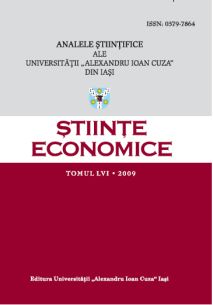Tourism and its impact upon the Romanian economy: An input-output approach
Tourism and its impact upon the Romanian economy: An input-output approach
Author(s): Camelia Surugiu, Cristi Frent, Marius SurugiuSubject(s): National Economy, Economic development, Transformation Period (1990 - 2010), Tourism
Published by: Editura Universităţii »Alexandru Ioan Cuza« din Iaşi
Keywords: tourism; economic impact; multipliers; input-output;
Summary/Abstract: In different countries around the world, tourism is struggling to sustain economic growth in a sustainable manner. Even if Romania has an important tourism potential, in the last nineteenth years tourism didn’t contribute of more than 2-3% to the national GDP. In terms of non-monetary indicators (arrivals, overnight stays, occupancy rates, average length of stay) tourism has registered a significant decline comparing with the reference year 1990. Using Input-Output analysis, known as being a useful, efficient and trustable instrument, tourism contribution to the Romanian economy was measured. The Input-Output model synthesizes the intersectoral relationships existing between hotels, restaurants and travel agencies and other economic sectors and also might predict the effects generated by different changes that could take place in an economy. Backward and forward linkages are used to describe how the increase in the production of tourism sector generates an increase in the demand for inputs from other sectors in the economy and respectively in the supply to other economic sectors. These linkages provide a general image of how tourism sector might sustain the economic growth in Romania.
Journal: Analele Ştiinţifice ale Universităţii »Alexandru Ioan Cuza« din Iaşi. Ştiinţe economice
- Issue Year: 56/2009
- Issue No: 1
- Page Range: 355-376
- Page Count: 22
- Language: English

